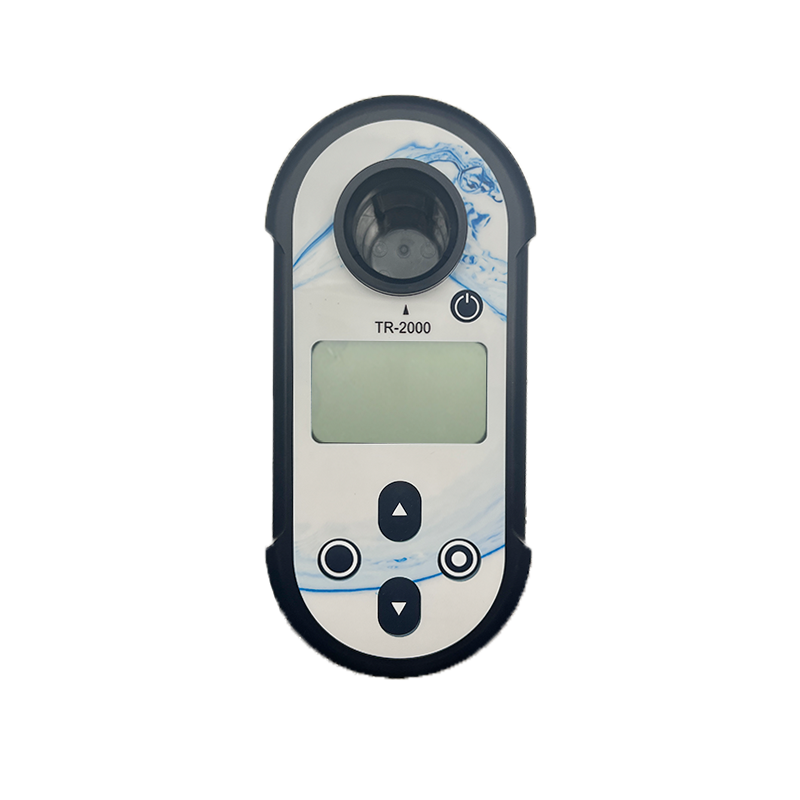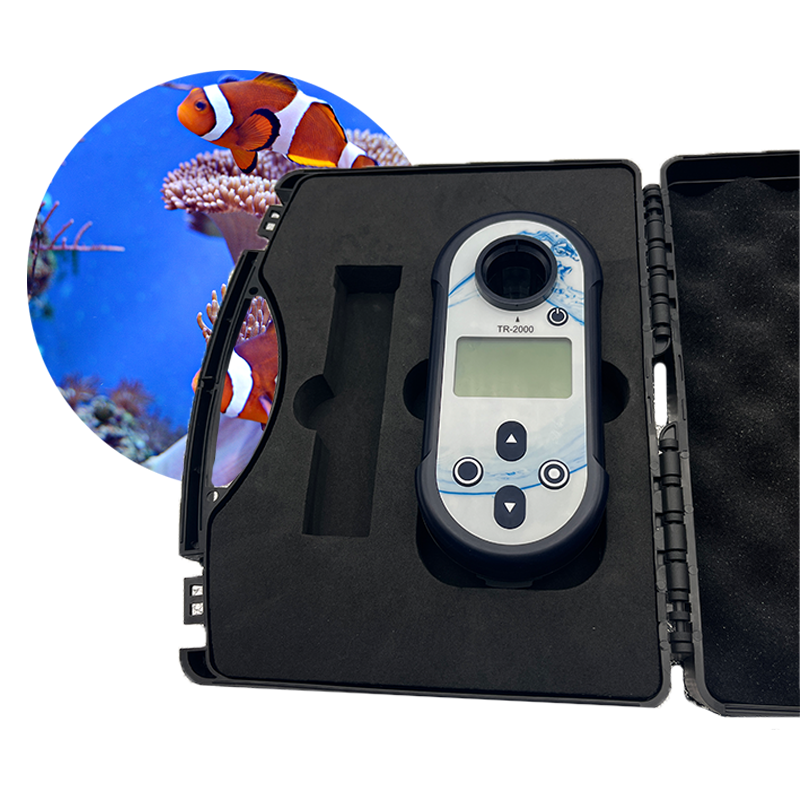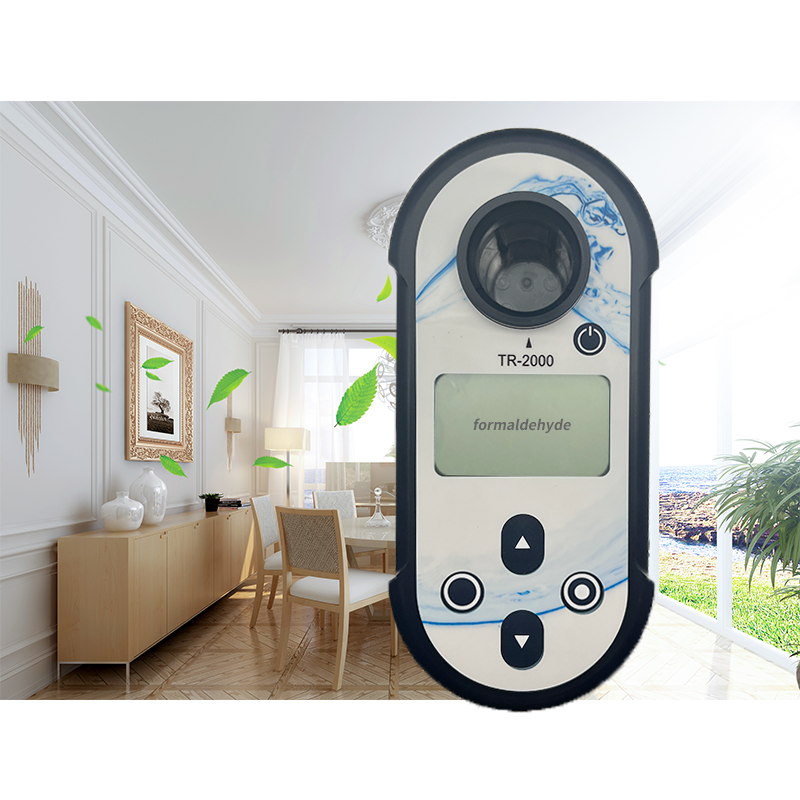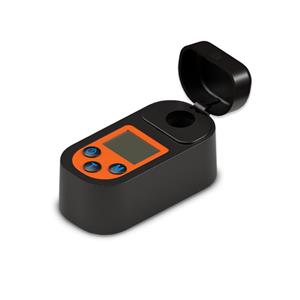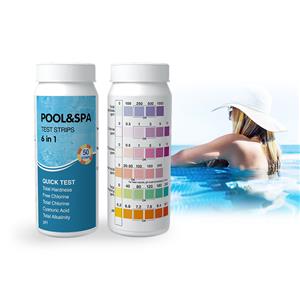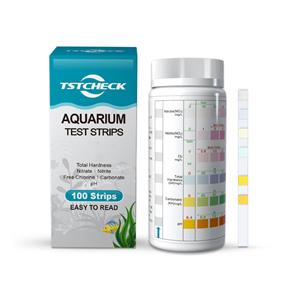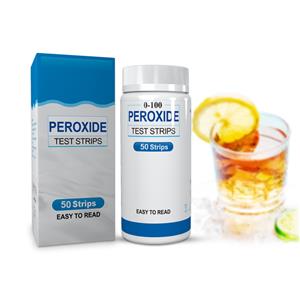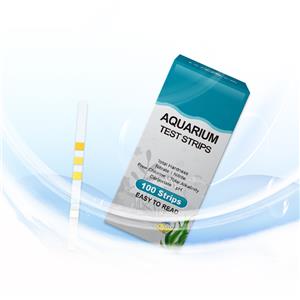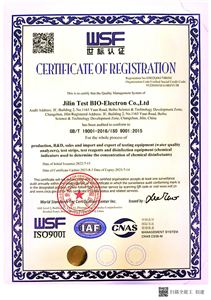Product Description: Photometer TR-2000 with photoelectric technology & microprocessor technology is widely used to test water pH, free chlorine and total alkalinity in swimming pools, spas, and hot tubs. Working Principle: When the test strip is placed in the water, the reagent on the test pad will react with the water, causing water changing colors. Due to different concentrations of the substance to be tested in the water, the color will also be different. A specific wavelength of light will be absorbed when the incident light in the instrument passes through the sample tube, and the degree of absorption is related to the color of the liquid in the sample tube.
TR - 2000 Water Quality Testing Instrument: A Comprehensive Overview
Introduction to Water Quality Testing and the Need for Advanced Instruments
Water quality is of utmost importance in various aspects of our lives, from ensuring the safety of drinking water to maintaining the health of aquatic ecosystems in aquariums, ponds, and industrial processes. The process of water quality test involves assessing a wide range of parameters to determine the suitability of water for its intended use. These parameters can include physical properties such as temperature, turbidity, and color, as well as chemical properties like pH, dissolved oxygen, heavy metal concentrations, and the presence of harmful contaminants.
In the past, water testing was often a cumbersome and time - consuming process, relying on manual methods and basic reagents. However, with the advancements in technology, sophisticated water testing instruments have emerged, revolutionizing the field. Among these, the TR - 2000 water quality analyzer stands out as a highly efficient and accurate device that has become an essential tool for professionals and enthusiasts alike in the realm of water quality management.
2. An In - Depth Look at the TR - 2000 Water Quality Analyzer
2.1 Design and Build
The TR - 2000 is carefully engineered with a focus on durability and functionality. Its compact and ergonomic design makes it easy to handle and transport, whether it's being used in a laboratory setting, on - site at a water treatment plant, or in the field for environmental monitoring. The housing is made from high - quality materials that are resistant to corrosion, ensuring long - term performance even in harsh operating conditions.
2.2 Parameter Detection Capabilities
Comprehensive Parameter Coverage: This digital water tester is capable of measuring a vast array of water quality parameters. It can accurately determine the pH value of water, which is a crucial indicator of its acidity or alkalinity. Different applications require specific pH ranges; for example, drinking water typically has a pH between 6.5 - 8.5, while aquatic habitats for certain fish species may demand a more precise pH range. The TR - 2000 can detect pH with a high degree of accuracy, often up to two decimal places.
Dissolved Oxygen Measurement: Dissolved oxygen is essential for the survival of aquatic organisms. The TR - 2000 uses advanced sensor technology to measure the amount of dissolved oxygen in water. This parameter is critical in assessing the health of rivers, lakes, and aquaculture systems. Low levels of dissolved oxygen can lead to fish kills and the degradation of the aquatic ecosystem.
Turbidity Analysis: Turbidity refers to the cloudiness or haziness of water caused by suspended particles. The TR - 2000 can precisely measure turbidity, which is important in water treatment processes. High turbidity can interfere with disinfection processes and may indicate the presence of harmful pathogens or excessive sediment.
Heavy Metal Detection: In an era where environmental pollution is a major concern, the ability to detect heavy metals in water is vital. The TR - 2000 is equipped with sensors or testing modules that can identify and quantify the presence of heavy metals such as lead, mercury, cadmium, and copper. Elevated levels of these heavy metals in water can have severe health implications for humans and wildlife.
Nutrient Detection: Parameters like nitrate and phosphate, which are essential nutrients in water, can also be measured by the TR - 2000. In excessive amounts, these nutrients can cause eutrophication in water bodies, leading to algal blooms and oxygen depletion.
2.3 How the TR - 2000 Works
Sensor - Based Technology: The core of the TR - 2000's operation lies in its advanced sensor technology. For parameters such as pH and dissolved oxygen, specific sensors are used. For example, the pH sensor consists of a glass electrode that generates an electrical potential proportional to the hydrogen ion concentration in the water. This potential is then measured and converted into a pH value by the instrument's internal microprocessor.
Optical and Chemical Detection Methods: In the case of turbidity measurement, the TR - 2000 often uses optical methods. It emits light into the water sample and measures the amount of light scattered or absorbed by the suspended particles. For heavy metal detection, chemical reactions are involved. The water sample is treated with specific reagents, and the resulting color change or electrochemical response is measured to determine the concentration of the heavy metal.
Data Processing and Display: Once the sensors or chemical reactions generate signals related to the water quality parameters, the TR - 2000's internal microprocessor processes this data. It uses complex algorithms to convert the raw signals into meaningful numerical values. These values are then displayed on the instrument's clear and easy - to - read digital screen, providing instant and accurate results to the user.
3. The Advantages of the TR - 2000 in Water Testing
3.1 High Accuracy
One of the most significant advantages of the TR - 2000 water quality analyzer is its high level of accuracy. The use of state - of - the - art sensors and calibration techniques ensures that the measured values are extremely close to the actual values of the water quality parameters. This accuracy is crucial in applications where even small deviations in water quality can have significant consequences, such as in pharmaceutical water production, where strict water quality standards must be met.
3.2 Fast Results
In many water testing scenarios, time is of the essence. The TR - 2000 is designed to provide rapid results. Unlike traditional water testing methods that may require hours or even days to obtain results, the TR - 2000 can often provide accurate readings within minutes. This speed allows for quick decision - making, whether it's in a water treatment plant where adjustments to the treatment process need to be made promptly or in an emergency situation where the quality of drinking water needs to be assessed immediately.
3.3 User - Friendly Interface
The TR - 2000 features a user - friendly interface that makes it accessible to users with varying levels of technical expertise. The digital display clearly shows the measured values, and the controls are intuitive. Even those new to water testing can quickly learn how to operate the instrument. Additionally, the instrument often comes with detailed user manuals and on - board tutorials that guide the user through the testing process, from sample collection to result interpretation.
3.4 Data Storage and Connectivity
This digital water tester has built - in data storage capabilities. It can store a large number of test results, which is useful for long - term monitoring and trend analysis. The stored data can be retrieved at any time for further review or comparison. Moreover, the TR - 2000 is often equipped with connectivity options such as USB ports or wireless communication modules. This allows for easy transfer of data to external devices such as computers or tablets, where the data can be further analyzed using specialized software or shared with other professionals.
4. Applications of the TR - 2000 Water Quality Analyzer
4.1 Drinking Water Quality Monitoring
Ensuring the safety of drinking water is a top priority for municipalities and water treatment facilities. The TR - 2000 plays a crucial role in this process. It can be used to continuously monitor the water quality at various stages of the treatment process, from the raw water intake to the distribution network. By regularly testing parameters such as pH, turbidity, dissolved oxygen, and the presence of contaminants, water treatment operators can ensure that the water supplied to consumers meets the strictest health standards.
4.2 Aquaculture and Aquarium Management
In aquaculture, maintaining optimal water quality is essential for the growth and survival of fish, shrimp, and other aquatic organisms. The TR - 2000 can be used to test the water in fish farms, ponds, and aquariums. Aquarists can use it to monitor parameters like pH, ammonia, nitrite, and nitrate levels, which are critical for the well - being of the fish. By regularly testing the water with the TR - 2000, aquaculture farmers and hobbyists can make timely adjustments to the water conditions, such as adding water conditioners or adjusting the filtration system, to create a healthy environment for their aquatic livestock.
4.3 Environmental Monitoring
For environmental scientists and researchers, the TR - 2000 is an invaluable tool for monitoring the quality of natural water bodies such as rivers, lakes, and oceans. It can be used to study the impact of pollution, climate change, and human activities on water quality. By collecting data on parameters like heavy metal concentrations, nutrient levels, and dissolved oxygen over time, scientists can gain a better understanding of the ecological health of these water bodies and develop strategies for conservation and restoration.
4.4 Industrial Water Treatment
Industries such as manufacturing, power generation, and food and beverage production rely on large amounts of water. The quality of this water can affect the efficiency and safety of industrial processes. The TR - 2000 can be used to test the water used in boilers, cooling towers, and industrial production lines. By monitoring parameters such as hardness, alkalinity, and the presence of impurities, industries can prevent equipment corrosion, scale formation, and other issues that can lead to costly downtime and maintenance.
5. Comparison with Other Water Testing Instruments
When considering water quality testing instruments, it's important to compare the TR - 2000 with other options in the market.
5.1 Against Traditional Test Kits
Traditional water test kits often rely on chemical reactions and color - comparison charts. While they can provide basic water quality information, they are generally less accurate than the TR - 2000. For example, determining the exact concentration of a heavy metal using a traditional test kit can be challenging, as it depends on subjective color matching. In contrast, the TR - 2000 uses precise sensors and data processing algorithms to provide accurate numerical values. Additionally, traditional test kits are more time - consuming, as each parameter may require a separate test, while the TR - 2000 can measure multiple parameters simultaneously.
5.2 Competitor Water Analyzers
In the market of digital water testers and water quality analyzers, there are other competitors. However, the TR - 2000 often stands out due to its unique combination of features. Some competitor instruments may be more expensive without offering a significant advantage in terms of accuracy or functionality. Others may lack the comprehensive parameter coverage that the TR - 2000 provides. For example, some water analyzers may only be able to measure a limited number of parameters, while the TR - 2000 can cover a wide range of physical, chemical, and biological parameters relevant to water quality.
6. Maintenance and Calibration of the TR - 2000
To ensure the continued accurate performance of the TR - 2000 water quality analyzer, regular maintenance and calibration are essential.
6.1 Maintenance Requirements
The instrument should be kept clean, especially the sensors and sampling ports. Regularly rinsing the sensors with distilled water after use can prevent the buildup of contaminants that could affect the accuracy of the readings. The exterior of the instrument should also be wiped clean to prevent dust and dirt from interfering with its operation. Additionally, the battery (if it's a battery - powered model) should be checked and recharged or replaced as needed to ensure uninterrupted use.
6.2 Calibration Process
Calibration is a crucial step in maintaining the accuracy of the TR - 2000. Calibration involves adjusting the instrument's readings to match known standard values. The instrument usually comes with calibration solutions of known concentrations for each parameter it measures. For example, to calibrate the pH sensor, calibration solutions with known pH values (such as pH 4, 7, and 10) are used. The TR - 2000 is then adjusted so that it reads the correct pH values for these calibration solutions. Calibration should be performed regularly, typically according to the manufacturer's recommendations, which may range from weekly to monthly depending on the frequency of use and the stability of the water quality being tested.
In conclusion, the TR - 2000 water quality analyzer is a highly advanced and versatile instrument that has transformed the field of water testing. Its ability to accurately measure a wide range of water quality parameters, provide fast results, and offer user - friendly operation makes it an ideal choice for various applications, from drinking water safety to environmental protection and industrial processes. With proper maintenance and calibration, the TR - 2000 can continue to be a reliable partner in ensuring the quality of water in our world.
Factory or Trading Company
Factory.
We speicalize in producing water test strips for years.
...more

